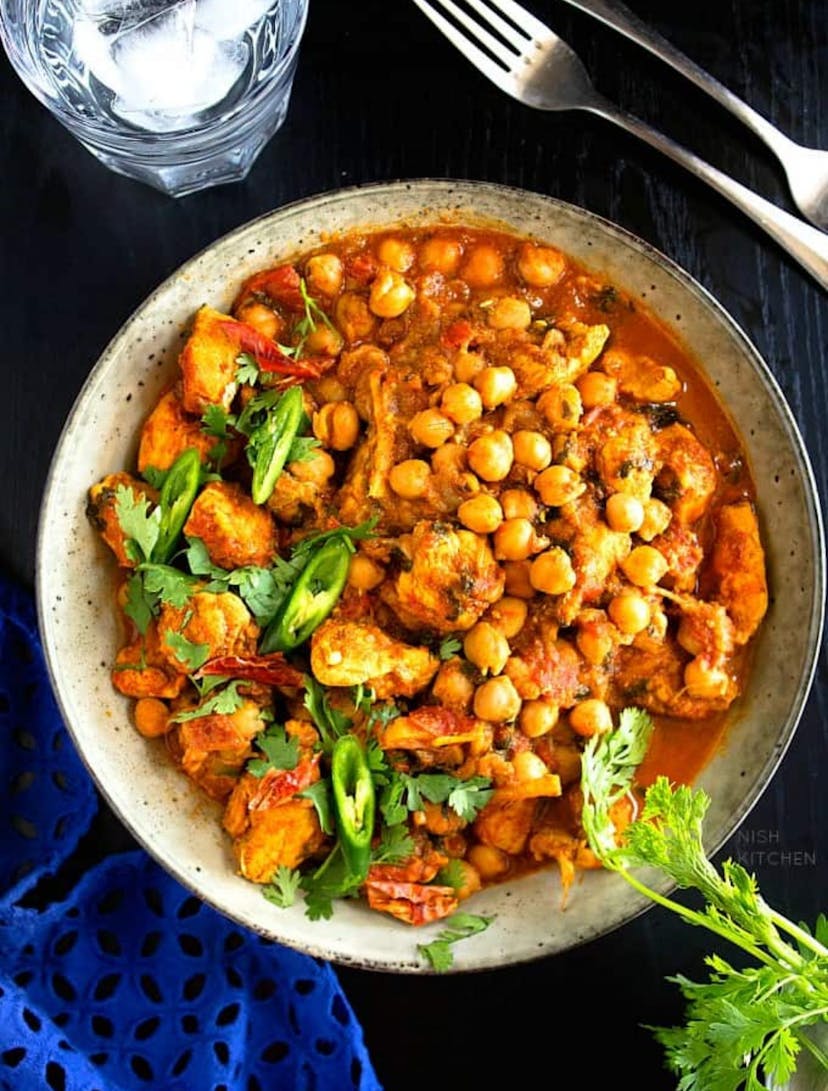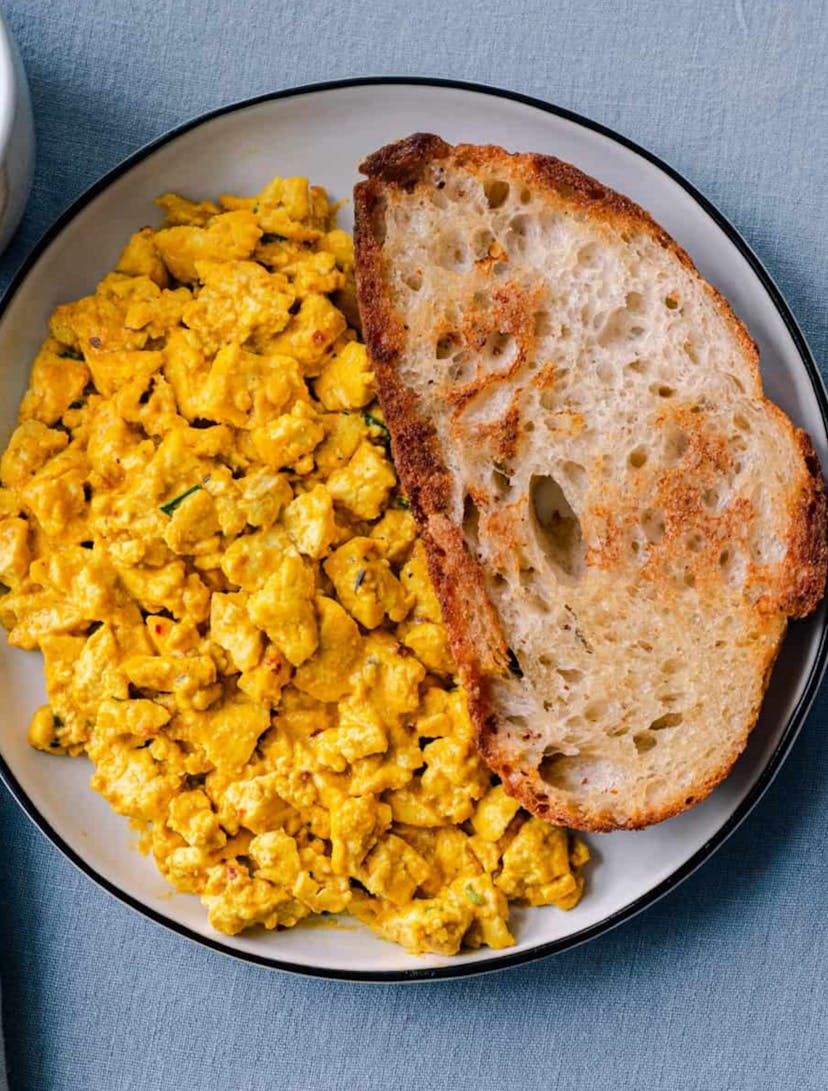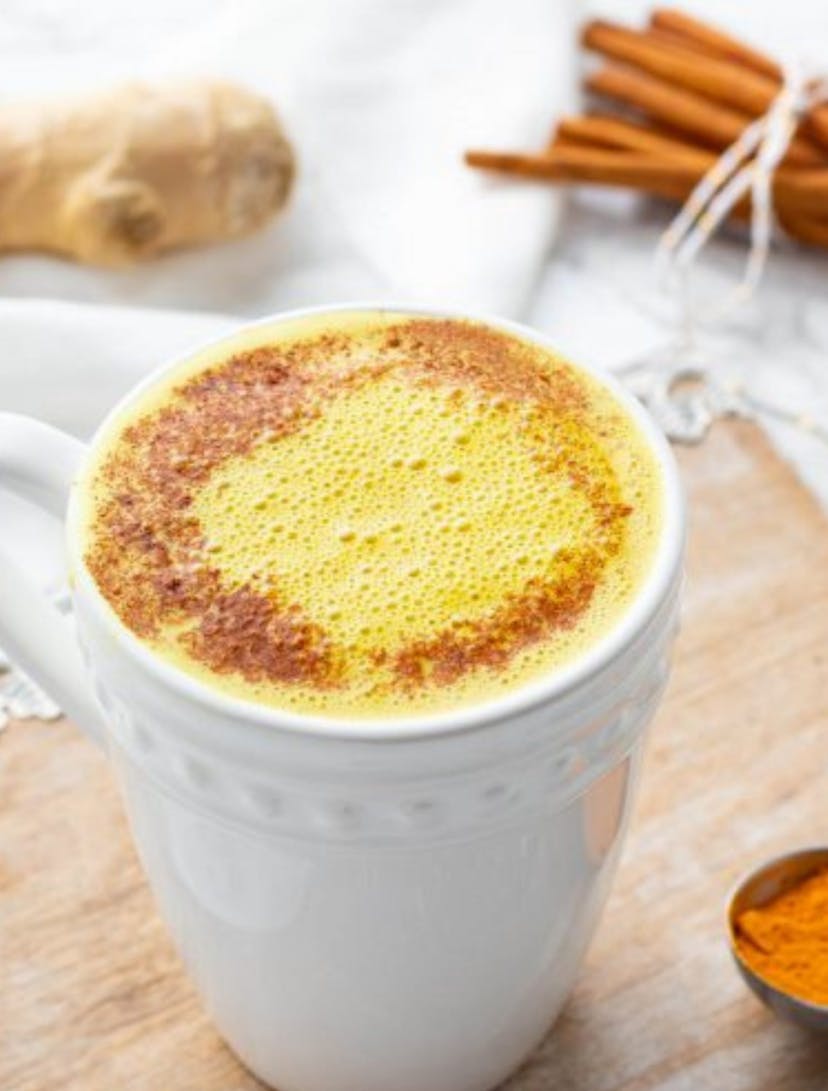The Turmeric Benefits The Skin Experts Want You To Know
9 minutes read
What if we told you that the secret to your coveted bright, glowing skin is just sitting in your spice rack under the name of turmeric? If you’re curious about turmeric’s skin benefits, keep reading.
Beauty Daily reached out to the UK’s leading experts, including nutritionists and dermatologists, to discuss the turmeric benefits for the skin you need to know. Plus, the best turmeric-infused skincare products to use, turmeric recipes and supplements to consume, so you get a flawless complexion.
What Exactly Is Turmeric?
According to experts, this yellow spice makes drinks and dishes taste good, but it can also deliver significant skin benefits.
Turmeric is one of the buzziest skincare ingredients in modern Western skincare, introduced by our Eastern counterparts. It has been used for thousands of years for medicinal, culinary and beauty purposes. As a result, it has become a go-to skincare staple amongst skin experts and skincare brands.
Turmeric, as you may know, is a root plant related to ginger, commonly used as a spice around the world, especially in South Asia. It has a vivid yellow, orangey colour because of the active ingredient called curcumin. This potent, active ingredient is where the goodness is. Experts say it has anti-inflammatory, antimicrobial, antioxidant, antiviral, antibacterial, anti-fungal and anti-cancer properties; no wonder it’s hardly possible for anyone to be anti-turmeric.
Turmeric is also a common ingredient in Ayurvedic treatments. Ayurvedic skincare is rooted in India’sthousands-year-old holistic healing philosophy. Ayurvedic skincare includes facials, face masks, and herbal formulations.
Did you know that turmeric is used in Indian Wedding customs? When applied to brides’ and groom’s skin a few days before their wedding day to enhance their complexions and give the skin a glow. Something you should consider when preparing for a big day!

Is Turmeric Good For The Skin?
“Yes, studies have shown that turmeric has anti-inflammatory and antioxidant effects, which can be helpful in various conditions. Most studies looked at ingesting turmeric, but some also looked at applying it to the skin,” says Dr Mia Jing Gao, a London-based Consultant Dermatologist.
One study suggests that turmeric reduces skin ageing, preventing moisture loss and protecting against wrinkles. Thanks to its anti-inflammatory, antimicrobial, and antioxidant properties, Turmeric has also been proven effective in treating several skin conditions, such as eczema and atopic dermatitis.
“Overall, there is early evidence that turmeric products and supplements, may provide benefits for skin conditions such as acne, but studies are limited, and I would still recommend more traditional treatments for blemishes as the first line,” says Dr Gao.
Read next: How To Expertly Care For Blemish-Prone Skin
Turmeric Benefits For Skin?
Turmeric’s benefits for the skin are helping to reverse UV-damage, lightening dark spots and hyperpigmentation, treating and preventing acne formation, minimising pore size, and improving and brightening skin tone.
Are there side effects of using turmeric?
If you’re going the DIY route, Dr Jing says, “Side effects to look out for include stinging and staining of the skin.” Also, best to check if you’re allergic to it. Otherwise, there should be no side effects of using turmeric.
Turmeric-infused skincare products on the market have been designed to minimise the staining on the skin, so there is no need to worry about looking like an orange.
“As with anything, I recommend starting new products gently and trying to incorporate turmeric products initially just once or twice a week. Then, if no irritation develops, you could increase it,” says Dr Gao.
When consuming turmeric in your diet, Marilia Chamon, founder of Gutfulness Nutrition, registered nutritional therapist and gut health specialist, says: “There is no official consensus of the daily recommended intake for turmeric. However, studies show that it can be beneficial in doses ranging from 500 mg to 10,000 mg, depending on the condition you are trying to address – unless you have a medical condition where turmeric should not be consumed, you are unlikely to overdose by drinking turmeric lattes or adding turmeric to dishes,” she Chamon says.
There is no standard dose for turmeric; however, the WHO recommends 1.4mg of turmeric per pound of body weight.
Laura Jennings, a UK-based registered associate nutritionist, adds: “Turmeric is generally considered non-toxic for humans, and higher doses are typically recommended to yield maximum dermatological benefits. Clinical studies have found turmeric to be safe at 6g per day orally for 4-7 weeks. While there is no daily recommended intake for turmeric, it is important to consider the bioavailability of the herb.
For instance, the amount of turmeric available in lattes is close to around 200 mg and drinking anywhere between 1-5 turmeric lattes daily is considered safe. Therefore, consuming a turmeric latte with a dish containing turmeric would only work to optimise its benefits, as it is unlikely to cause any adverse side effects. This is the same for turmeric supplements, with no adverse side effects reported. However, there have been reports of symptoms of nausea, dizziness, and an upset stomach in very high amounts (over 6000 mg twice daily),” Jennings says.
Expert-Approved Ways To Use Turmeric
Incorporating turmeric into your skincare
Double Serum

If you’re searching for the best way to incorporate the benefits of turmeric into your skincare routine, look no further. Double Serum, the best-selling serum of Clarins, has turmeric as its key ingredient, along with 20 more plant extracts working hard to give you glowing, radiant and flawless skin.
Besides the fantastic skin benefits, Clarins Laboratories found another potent active ingredient from Turmeric, aside from curcumin, called turmerone, which Clarins Training Manager, Charlotte McHale, states: “dramatically improve cellular communication in the skin.”
“This [turmeric extract] ensures your skin can communicate its needs effectively and work more efficiently. Turmerone is a molecule that the turmeric plant uses to communicate with other plants and insects (for example, to encourage pollination). This bio-inspiration led us to research the effects on the skin,” McHale explains.
Turmerone optimises cellular communication in the skin, resulting in firmer, more radiant skin.
“We found it increased the number of skin cell receptors (which deplete through age) by 126%—a huge discovery. Turmerones are extracted from the root and leaves of the turmeric plant. Double Serum is the only product we have that contains this incredible extract.”
Incorporating Turmeric in your diet
Consuming turmeric is not as easy as it’s not easily absorbed in the body. The reason for this is that the compound curcumin dissolves in fat rather than water, and, given the watery environment of our digestive system, it just ends up being excreted by the body.
However, there are things you can do to increase its absorption.
“To increase turmeric’s bioavailability, there are some foods we can eat alongside turmeric to increase its dermatological benefits. For instance, consuming black pepper alongside turmeric has been shown to make turmeric more bioavailable because black pepper contains piperine, a compound that protects turmeric from digestive enzymes.
Alternatively, consuming turmeric with healthy fats, such as avocado, nut butter, and fatty fish, is a great way to increase its bioavailability. And lastly, the method of cooking turmeric (under 15 minutes) increases the bioavailability of the spice. Orally consuming turmeric in food allows for optimal skin health from the inside out, says Jennings.
Nutritionist Jennings shared four everyday recipes to incorporate this magic and miraculous spice into your diet:
Chickpea, Chicken and Turmeric Curry (Serves 4)

Ingredients:
1 medium onion
3 teaspoons ground turmeric
2 crushed garlic cloves
2 tablespoons of olive oil
1 teaspoon coriander
1 teaspoon ground ginger
2 teaspoons paprika
1 tablespoon mango chutney
400g can of coconut milk
2 tablespoons of cashews
4 boneless skinless chicken thighs cut into 1” pieces
400g of chickpeas drained and rinsed
100g of spinach
1 tablespoon of freshly squeezed lime
Serve with your choice of rice (400g): Coconut, Jasmine and short-grain brown rice go well with this dish.
Instructions:
- Place the rice in a pan of cold water and bring to the boil, then let cook for 30 minutes. Brown rice might need 40 minutes.
- Sauté the chicken in a separate pan sprinkling a pinch of turmeric, salt and pepper and set aside.
- Whilst the rice is cooking, chop one onion and add it to a frying pan and drizzle with olive oil. Once the onion is browning, add the turmeric, garlic, coriander, ginger, paprika, and mango chutney. Let the onions and spices fry together for 5 minutes, and then add the coconut milk.
- Bring to a boil and add your chickpeas. Simmer on low heat for 10 minutes before adding in your spinach.
- Combine your chicken and rice and cook for 5 minutes before serving.
Tip: Turmeric stains easily, so beware of white or light surfaces and wear an apron to protect clothing.
Turmeric Tofu Scramble

Ingredients:
2 tablespoons olive oil
1 small onion
2 garlic cloves crushed
8 mushrooms
5 oz. firm tofu
1 teaspoon ground turmeric
2 handfuls of spinach
Salt & Pepper
Instructions:
- Heat the olive oil in a pan and, once hot, add the onion, garlic, and mushrooms.
- Once the onion and mushrooms brown, move to one side of the pan, turn down the heat and crumble in the tofu.
- Sprinkle the turmeric over the tofu and stir in with the rest of the mixture and sauté for 5 minutes.
- Add in the spinach until wilted and season with salt and pepper.
Turmeric Latte (Serves 1)

Ingredients:
250ml milk of choice
1 heaped teaspoon ground turmeric
¼ teaspoon ground cinnamon
1 teaspoon of honey
Instructions:
- Place your milk of choice in a saucepan and heat over low to medium heat for 2-3 minutes.
- Once the milk is heated, add the spices and honey.
- Once the turmeric has been infused with the milk, serve in a mug.
Golden Turmeric Pancakes (Serves 4)

Ingredients:
200g plain flour
1 teaspoon baking powder
1 tablespoon honey
1 teaspoon ground turmeric
½ teaspoon ground ginger
25g butter
3 eggs
Milk
Salt
Instructions:
- Heat a large knob of butter in a large non-stick frying pan.
- Mix all the ingredients in a bowl to form a batter.
- Add 2 tablespoons of batter to the pan and swirl into a circular shape.
- Cook for 3 minutes on each side until golden.
Optional to Serve: Top with fresh fruit and yoghurt
If you want to add more turmeric to your diet through supplements or tea, Nutritionist Chamon has listed her favourites.

“I love Nutratea turmeric and cinnamon tea, £5.99; it is packed with anti-inflammatory and antioxidant properties. In addition, cinnamon can help regulate blood sugar levels, a common underlying cause of acne.

I also love Fushi’s turmeric juice, £20, made from 100% raw turmeric root sourced from India.

Rhythm Nutrition, £32.99 does a brilliant liposomal turmeric supplement, which also contains omega-3, a skin-loving nutrient,” Nutritionist Chamon recommends.
Read next: Mood-Boosting Foods To Bring Joy In 2023
Sign up for our newsletter
We will keep you in the loop for special offers, exclusive gifts and product news.

